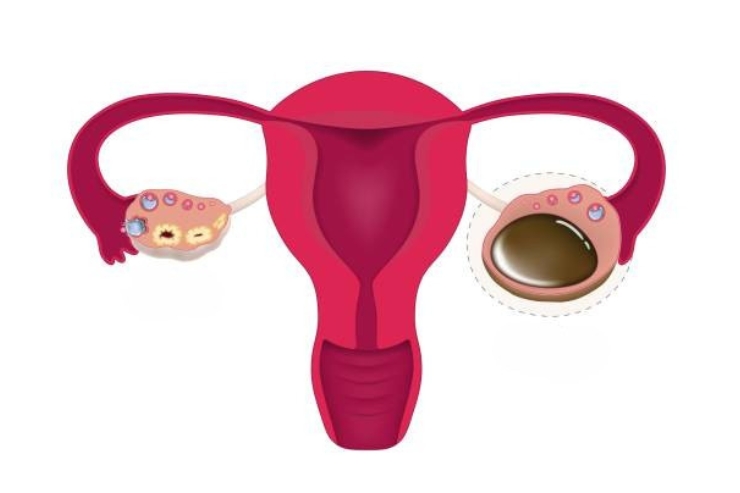
Ovarian cysts are fluid-filled sacs or pouches that develop on or within an ovary. These cysts can vary in size, number, and consistency—ranging from thin and watery to thick and paste-like. While many ovarian cysts are benign (non-cancerous) and resolve on their own, some may become symptomatic or raise concerns about cancer.
Most ovarian cysts form as a part of the normal menstrual cycle and are referred to as functional cysts. Others may be associated with underlying conditions like endometriosis, polycystic ovarian syndrome (PCOS), or ovarian cancer.
Symptoms of Ovarian Cysts may include:
Often asymptomatic and discovered incidentally during routine scans
Dull, aching pain in the lower abdomen
Heaviness or pressure in the lower abdomen
Symptoms related to underlying conditions such as endometriosis or PCOS
Sudden, severe abdominal pain accompanied by fever and vomiting in case of torsion (twisting of the cyst)
Management of Ovarian Cysts depends on factors such as the size and type of cyst, patient’s age, symptoms, and suspicion of malignancy.
Observation and regular follow-up in small, benign, and asymptomatic cysts
Definitive treatment involves Cystectomy – surgical removal of the cyst wall
Laparoscopic Management of Ovarian Cysts
Laparoscopic (keyhole) surgery is the preferred method for treating ovarian cysts. The surgical approach depends on:
The nature and size of the cyst
The patient’s age and desire for fertility preservation
The presence of complications such as rupture or torsion
Whether cancer is suspected
In many cases, only the cyst is removed, preserving the ovary. In complex cases, the cyst along with the affected ovary and fallopian tube may be removed. In the most severe cases—especially if malignancy is suspected—removal of both ovaries and the uterus may be required.

